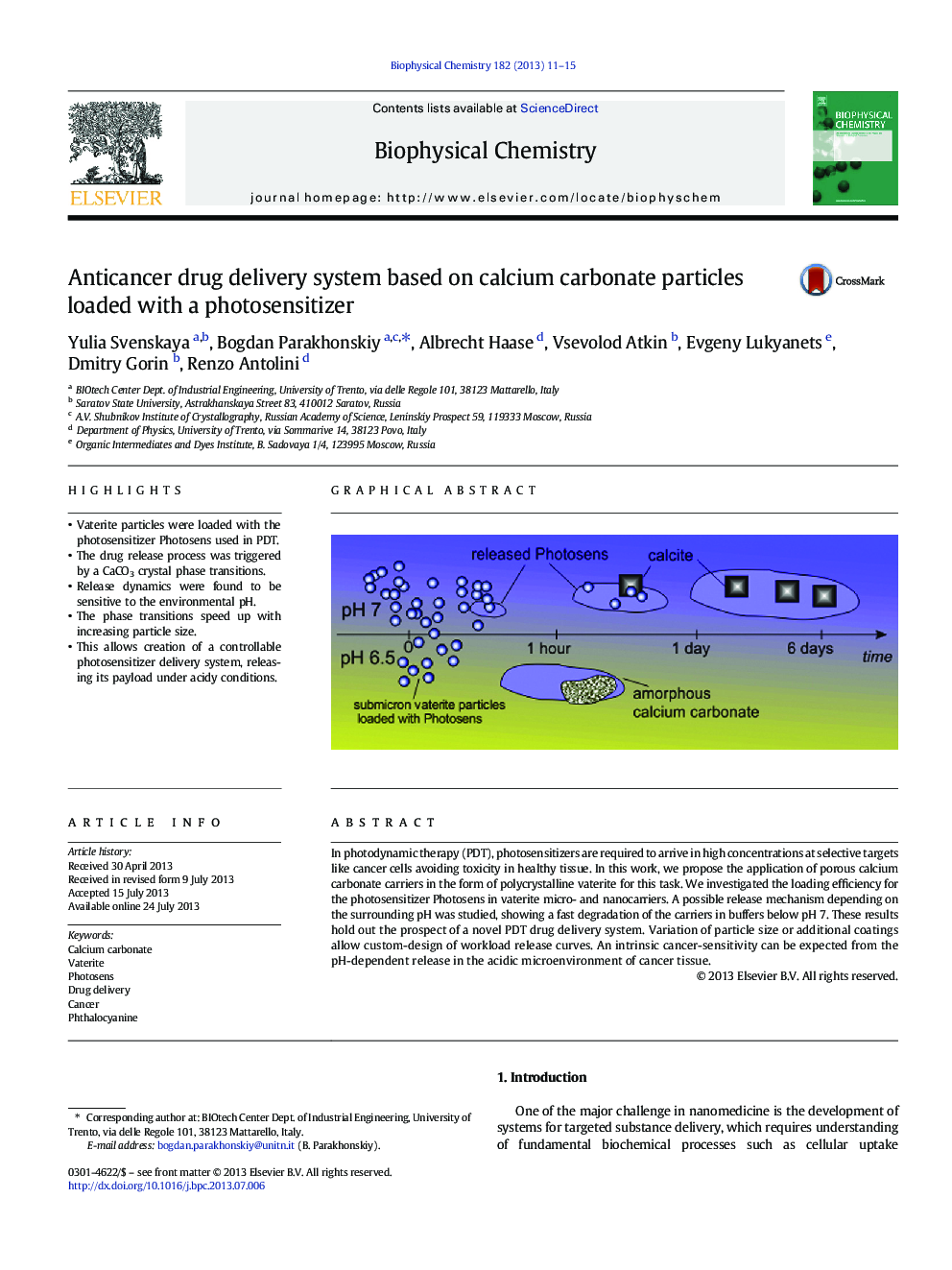| Article ID | Journal | Published Year | Pages | File Type |
|---|---|---|---|---|
| 5371104 | Biophysical Chemistry | 2013 | 5 Pages |
â¢Vaterite particles were loaded with the photosensitizer Photosens used in PDT.â¢The drug release process was triggered by a CaCO3 crystal phase transitions.â¢Release dynamics were found to be sensitive to the environmental pH.â¢The phase transitions speed up with increasing particle size.â¢This allows creation of a controllable photosensitizer delivery system, releasing its payload under acidy conditions.
In photodynamic therapy (PDT), photosensitizers are required to arrive in high concentrations at selective targets like cancer cells avoiding toxicity in healthy tissue. In this work, we propose the application of porous calcium carbonate carriers in the form of polycrystalline vaterite for this task. We investigated the loading efficiency for the photosensitizer Photosens in vaterite micro- and nanocarriers. A possible release mechanism depending on the surrounding pH was studied, showing a fast degradation of the carriers in buffers below pHÂ 7. These results hold out the prospect of a novel PDT drug delivery system. Variation of particle size or additional coatings allow custom-design of workload release curves. An intrinsic cancer-sensitivity can be expected from the pH-dependent release in the acidic microenvironment of cancer tissue.
Graphical abstractDownload full-size image
